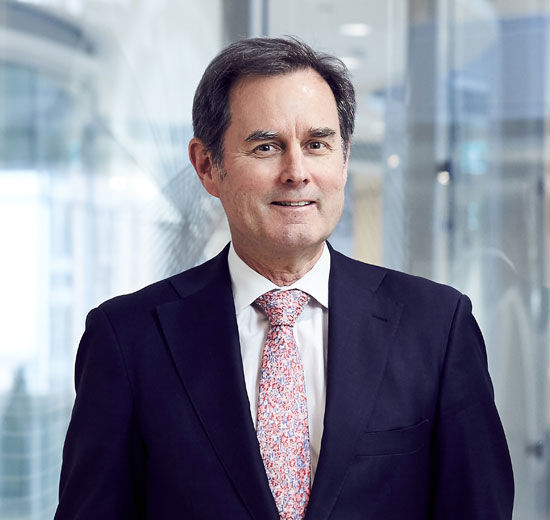From CEO Ian Learmonth

The CEFC has now been at the vanguard of Australia’s clean energy transition for 10 years and in 2022 exceeded $10 billion in cumulative investment commitments to accelerate the nation’s push to net zero emissions by 2050.
10-year record
Capital returned
These two significant milestones demonstrate the ongoing value of the unique CEFC model in helping tackle the emissions reduction challenge that is so critical to our future. Drawing on the firm foundations that were laid where we were established in 2012, the CEFC has helped transform the clean energy sector, and evolved in response to that transformation to strengthen our role as a market leading investor driving decarbonisation.
This first decade of investment leaves the CEFC in a powerful position to capitalise on the growing appetite in Australia to reduce emissions.
As we embark on our second decade of operation, the CEFC has the deep sector experience, investment expertise and portfolio strength to deliver on Australia’s ambitious new decarbonisation targets. These include a new emissions reduction target of 43 per cent from 2005 levels by 2030 and the goal of 82 per cent renewables by the end of the decade.
Australia’s renewed focus comes as the world continues to seek consensus on how to tackle this global challenge. In November I will attend the 27th meeting of the UN Climate Change Conference of the Parties in Egypt, on behalf of the CEFC. It follows COP26 in 2021 where I was privileged to be part of the Australian delegation in Glasgow, and it was encouraging to see increased interest in the CEFC model, with many leaders keen to learn from our experience as Australia’s ‘green bank’.
The growing global determination to decarbonise will only succeed if accompanied by sustained progress on a wide range of market, regulatory, economic and engineering challenges. These are many, but not insurmountable, and the CEFC can bridge the gap between our ambitions for the future and the constraints of the present. Just as we forged ahead of markets 10 years ago to help establish the solar and wind sectors in Australia, in the next decade the CEFC will continue to push open new doors across transmission, storage, hydrogen and more, so that private sector capital has a clear path to future investment.
Investment in renewable energy generation is increasingly essential given the current economic challenges and the pressing requirement to meet the shortfall in supply left by the expected retirement of coal-fired generation, which is exiting the grid more rapidly than forecast.
The Minister for Climate Change and Energy, the Hon Chris Bowen MP has named the CEFC as an agency that will play a key role in helping deliver the Government’s $20 billion Rewiring the Nation policy, an acknowledgement of our expertise in leading the investment push required to deliver nation-building infrastructure.
This financial year was bookended by two transformational investments in transmission infrastructure that highlight the flexible nature of our capital and how it can fill market gaps.
Our single largest investment to date of $295 million to develop EnergyConnect, a vital piece of energy infrastructure spanning more than 900 kilometres and a significant first step in the delivery of the AEMO Integrated System Plan, was followed almost 12 months later by a $160 million commitment to the Southern Downs Renewable Energy Zone (REZ). Importantly, the CEFC capital will enable Powerlink to future-proof the REZ by developing it at scale keeping connection costs down for the initial or foundation generators.
Our ongoing support for the renewable energy sector recognises the critical role that it will play in Australia’s future energy mix, as well as the headwinds it currently faces, including supply chain disruptions and rising inflation and interest rates. Our investments in 2021–22 ranged across the nation, from Blue Grass Solar Farm in Queensland to our work with Octopus Australia to develop the Blind Creek Solar and Battery project in NSW and the Gippsland Renewable Energy Park in Victoria.
The CEFC is also focused on sectors where the challenge is greatest, including agriculture and natural capital, transport and the built environment. I am pleased that this year we have successfully invested in agricultural assets alongside Goodman Group and private equity firm Greenpoint Group in a hybrid sustainable grazing model, with the goal of delivering carbon credits alongside enhanced biodiversity protection.
And we will continue to back Australia’s cleantech innovators whose ideas are so vital to decarbonisation. In the 2021–22 financial year, CEFC investments through the Innovation Fund backed the development of plastics recycling, sharkskin-inspired technology to reduce aviation and shipping drag, sustainable lithium production, and soil carbon measurement solutions to cut agriculture emissions. We also continued to support investments from earlier years as successful companies in the portfolio continued to grow rapidly.
We took the bold step this year of externalising management of our Innovation Fund portfolio, with the establishment of Virescent Ventures, an exciting new clean tech manager that is now seeking to raise its first fund by crowding in private sector capital into this important asset class.
The CEFC enjoys the support of Minister Bowen and the Minister for Finance; Minister for Women; Minister for the Public Service, Senator the Hon Katy Gallagher, who we welcomed to their roles in 2022. We continue our positive relationships with Government agencies, including the renamed Department of Climate Change, Energy, the Environment and Water. We also acknowledge and appreciate the guidance of the CEFC Board, ably led by our Chair Steven Skala AO.

Ian Learmonth
Chief Executive Officer, CEFC
